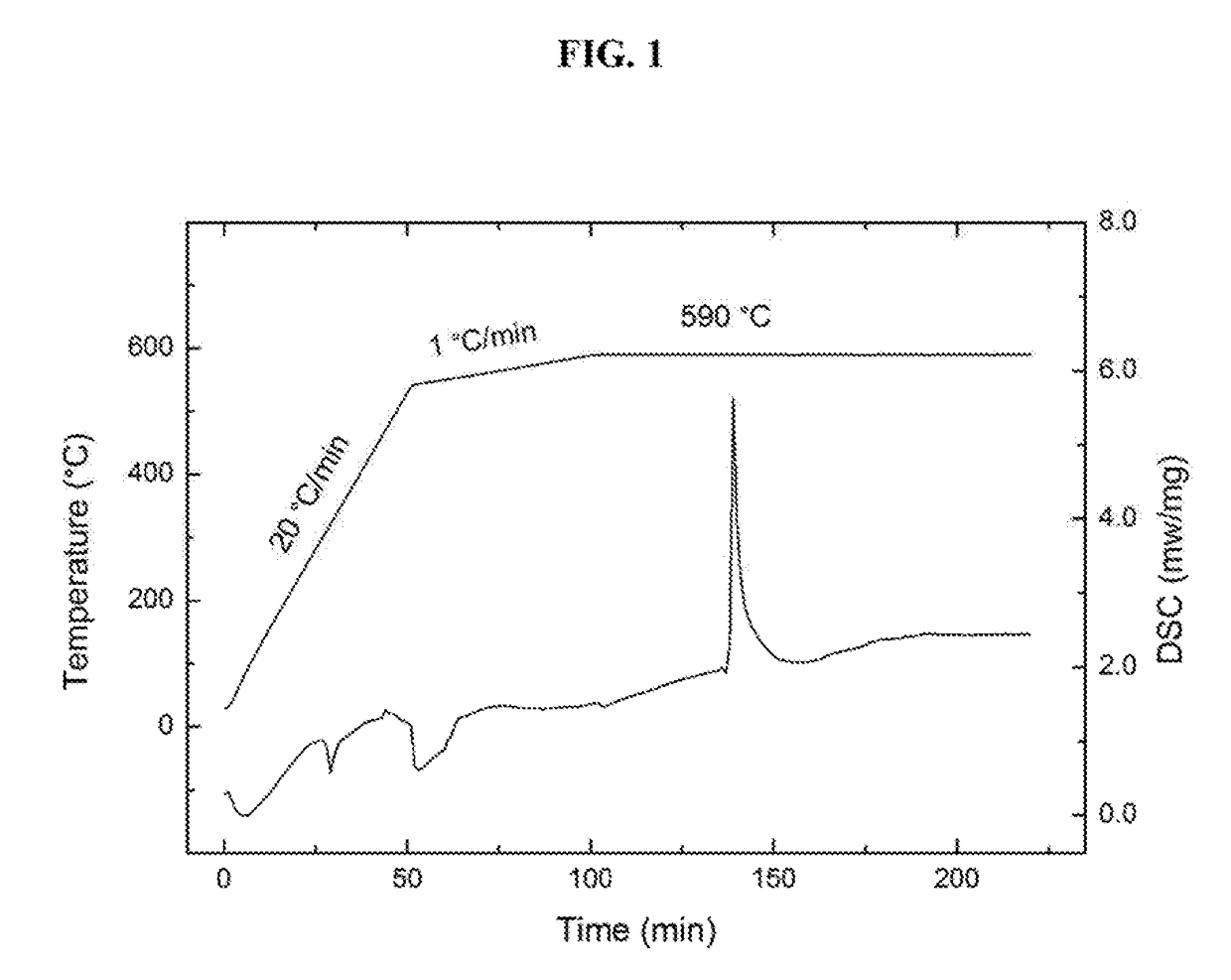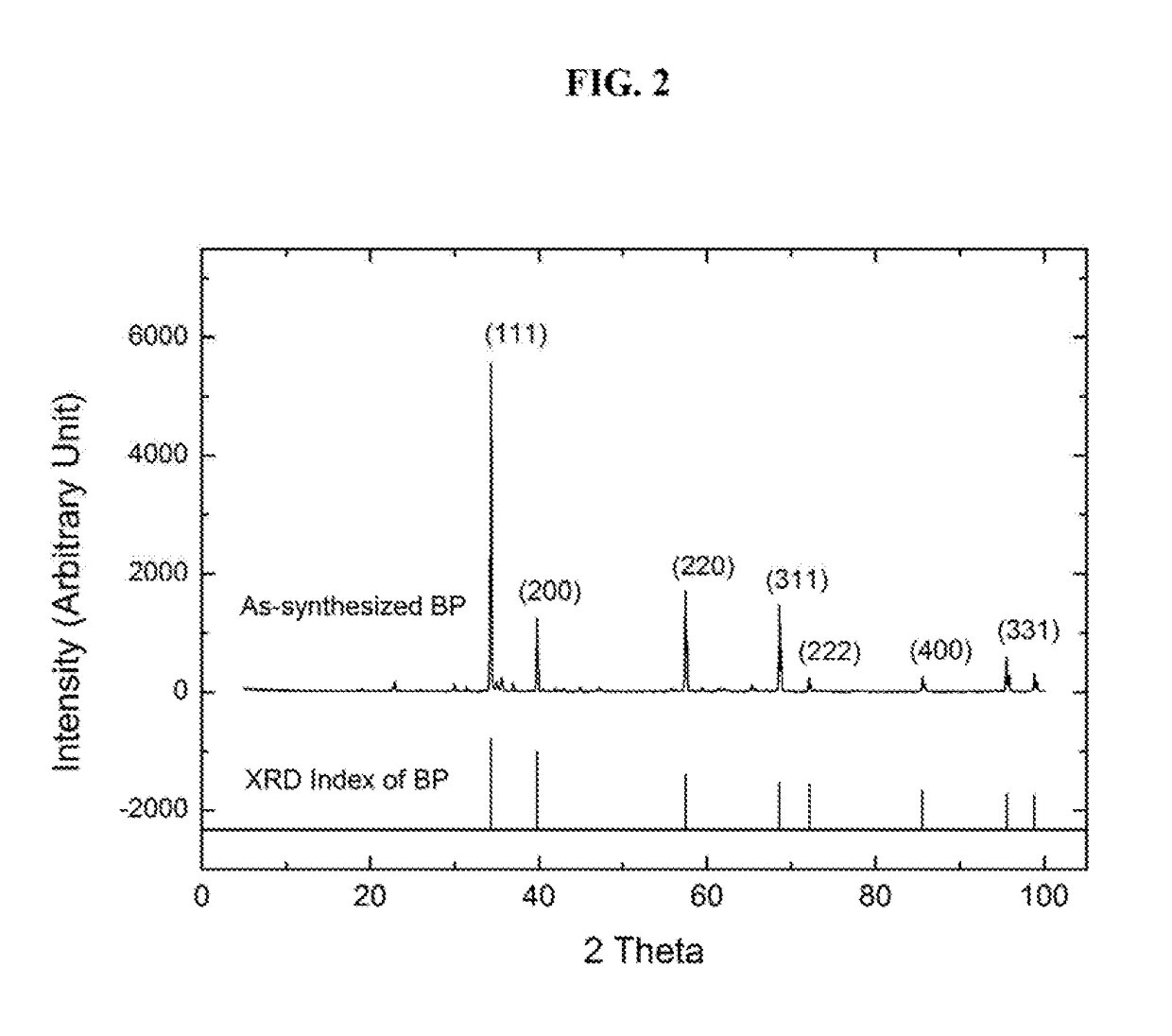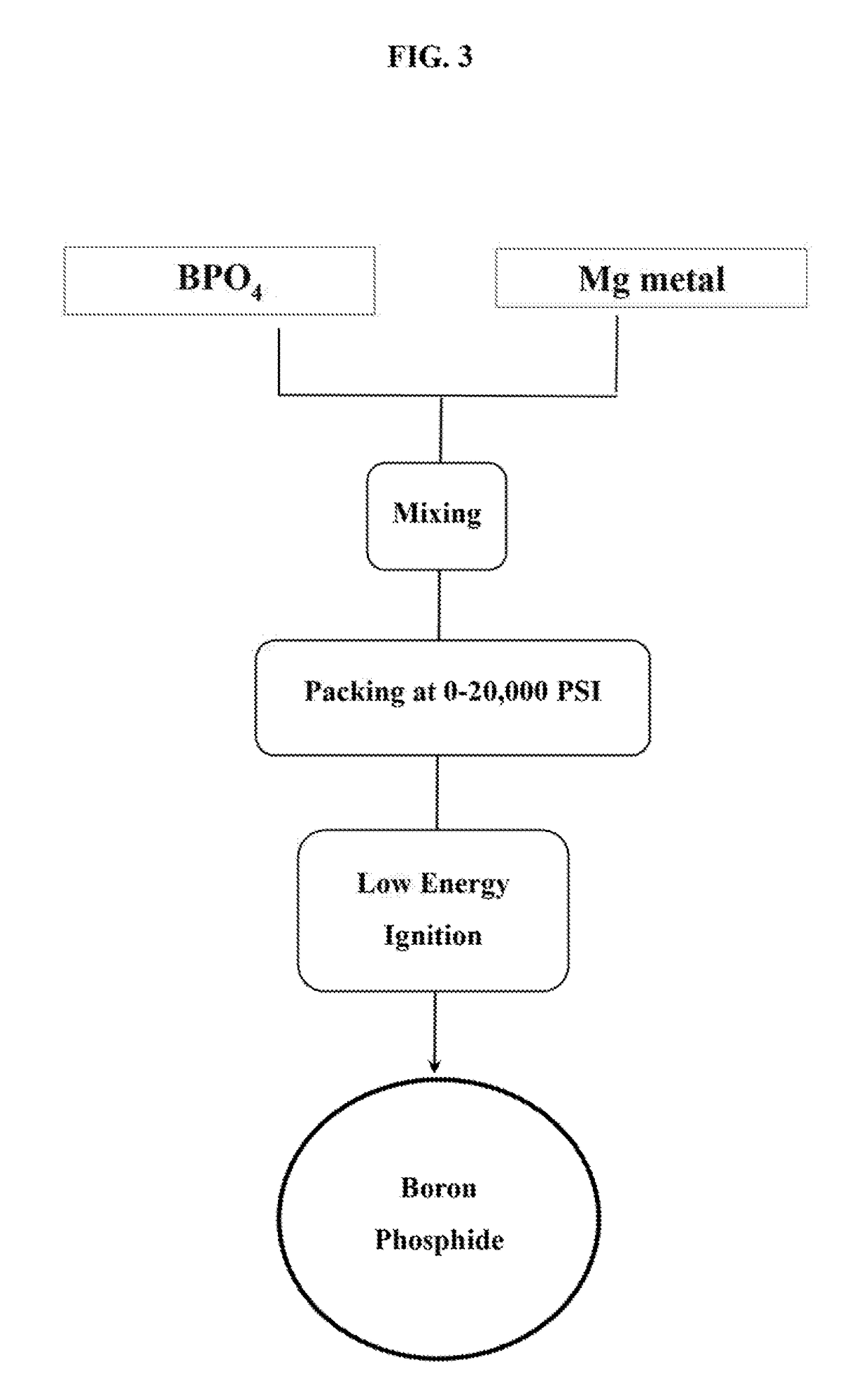High-yield synthesis of nanostructured boron phosphide by a pyrotechnic method
a pyrotechnic method and nanostructure technology, applied in the direction of phosphides, inorganic chemistry, phosphides, etc., can solve the problems of low yield of boron phosphide, and process producing high amounts of impurities, so as to achieve high yield, low yield of boron phosphide, and high amount of impurities
- Summary
- Abstract
- Description
- Claims
- Application Information
AI Technical Summary
Benefits of technology
Problems solved by technology
Method used
Image
Examples
example 1
[0024]Ground magnesium powder of about 200 mesh particle size was purchased from Magnesium Elektron Powders, and fine boron phosphate powder, in anhydrous form, was a sample from BassTech International. For BP synthesis, the magnesium and boron phosphate powders were mixed in a container with a mass ratio of 1 / 1, which is about a 4 / 1 molar ratio with 10% more magnesium in excess, followed by vigorous shaking and stirring by hand or a blending machine.
[0025]In an initial test, a 4.6 mg quantity of the mix was loaded into a ceramic pan in an apparatus for thermal analysis, heated in argon first at a rate of 20° C. / min to 540° C., then heated at 1° C. / min to 590° C., and then maintained at the final temperature for extended period of time. As can be seen in FIG. 1, a dramatic exothermic event, other than an expected slow thermal process, occurs in the isotherm section of the measurement. The temperature at which the reaction took place is noticeably lower than the melting point of the ...
example 2
[0028]A mixture of fine magnesium and boron phosphate powders was prepared as described in Example 1. A sample of around 11 g was then transferred into a steel cup and mounted into a steel container associated with a Parr 1266 Bomb calorimeter. The container was sealed and pressurized with argon to 450 psi, and the reaction was initiated with an electrically heated fuse wire of 10 cm length. The fuse wire had a correction factor of 2.3 cal / cm (9.6 J / cm), which accounts for the heat of combustion of the fuse wire and, approximately, for the very small amount of electrical energy supplied to heat it. Generally, the electrical energy supplied is small in comparison to the heat of combustion of the fuse wire, allowing one correction factor to be used regardless of the exact amount of electrical energy applied. Upon initiation, a dramatic exothermic event was recorded with a heat output of about an average of 1050 cal / g (4393 J / g). The test was repeated at least 3 times, and the results ...
example 3
[0031]A mixture of fine magnesium and boron phosphate powders was prepared as described in Example 1. A total of 4 g of the mix was pressed in 2 increments into a cardboard tube of 10 mm in inner diameter and 50 mm in length. Tubes were prepared in this way by pressing the mix with pressures ranging from 8,600 to 30,000 psi. A minimum of 3 tubes containing the consolidated mixture were produced at each pressure and one end of each pellet was coated with a thin layer of about 50 mg of A-1A ignition composition, a standard igniter composition with a heat output of around 450 cal / g (1883 J / g), which is equivalent to an energy input of about 22.5 cal (94.1 J) once ignited, in this configuration. The A-1A igniter composition, as described in the military specification MIL-P-22264A, contains zirconium, red iron oxide, and diatomaceous earth in a 65 / 25 / 10 weight ratio. In comparison, the thermal energy input of about 22.5 cal for ignition is remarkably small, which amounted to only about 0...
PUM
| Property | Measurement | Unit |
|---|---|---|
| pressure | aaaaa | aaaaa |
| energy | aaaaa | aaaaa |
| pressure | aaaaa | aaaaa |
Abstract
Description
Claims
Application Information
 Login to View More
Login to View More - R&D
- Intellectual Property
- Life Sciences
- Materials
- Tech Scout
- Unparalleled Data Quality
- Higher Quality Content
- 60% Fewer Hallucinations
Browse by: Latest US Patents, China's latest patents, Technical Efficacy Thesaurus, Application Domain, Technology Topic, Popular Technical Reports.
© 2025 PatSnap. All rights reserved.Legal|Privacy policy|Modern Slavery Act Transparency Statement|Sitemap|About US| Contact US: help@patsnap.com



